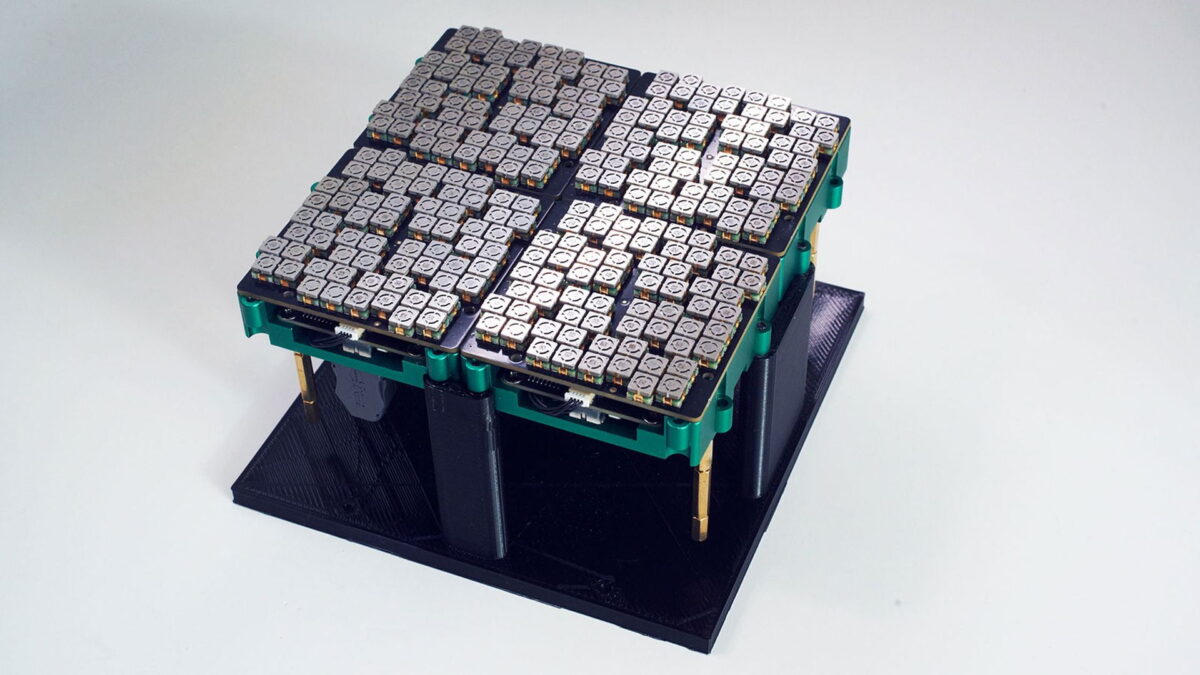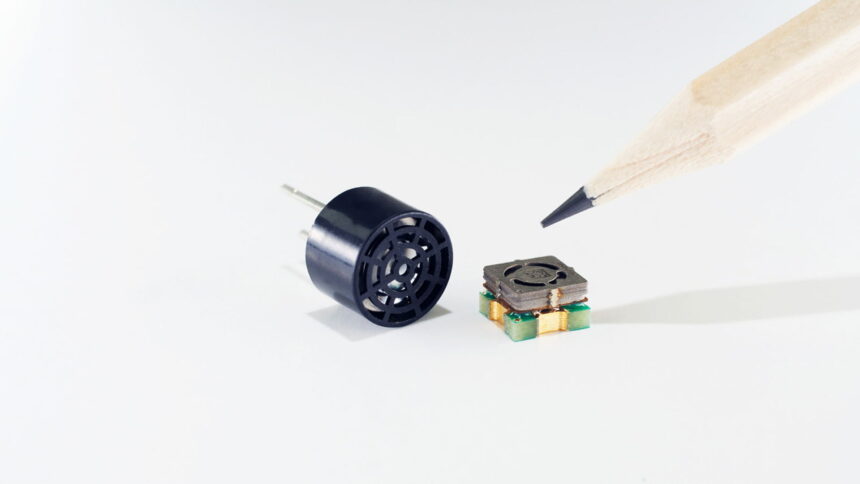Sensing digital objects in the air: Ultraleap introduces new technology

Ultraleap makes digital content tangible in the air. New hardware could help the technology make a breakthrough.
Ultraleap produces ultrasonic transducers that enable haptics without devices. Users can feel virtual objects in the air and interact with them through hand gestures. The hardware required for this is now being upgraded to make it much more efficient and suitable for mass production.
Ultraleap in the cockpit: gesture control instead of touchscreen and buttons
Ultraleap emerged in 2019 from the merger of Leap Motion and Ultrahaptics, two companies specializing in hand tracking and XR haptics. Leap Motion focused primarily on hand and finger tracking. Ultrahaptics produced small ultrasonic carpets that make contours of a virtual object in the air perceptible.
After the merger of the two companies, Ultraleap should move forward with advanced XR interfaces. Finger tracking and mid-air haptics should be combined and developed further. However, in addition to the XR industry, Ultraleap has focused on the automotive sector in recent years and wants to replace touchscreen and physical controls in cockpits with "Virtual Touch".
Gesture control is nothing new in itself. Google introduced Soli radar control in 2019 with the Google Pixel 4 smartphone. Via finger gestures, media players could be operated, for example, without touching the display. Today, Soli sits in the Google Nest Hub 2 smart display and helps with sleep analysis.
Ultraleap's Virtual Touch, however, goes a step further and projects ultrasound-based tactile sensations into the air. In contrast to Soli, Virtual Touch users can feel the virtual objects in the air and make adjustments in the cockpit by turning or sliding them. Ultraleap has now been able to significantly optimize the hardware required for this and speaks of a generation change in design.
Mid-air haptics will be smaller, cheaper and better
Ultraleap CEO Tom Carter explained the technology on Twitter, "Ultrasound transducers are like small speakers that project ultrasound onto your hand to create the haptic effect." The hardest part of developing transducers, he said, is converting electrical energy into sound instead of heat.
Today we announce a truly ground-breaking innovation, seven years in the making – new ultrasound transducers.
They make haptics smaller, cheaper and automotive ready.https://t.co/ejnRFXJ924
AdAd— Tom Carter (@iamtomcarter) November 2, 2022
"That challenge is even harder for transducers that operate in air rather than water (sonar) or human tissue (medical). To convert the energy to your target medium, you use a matching layer," Carter writes. To convert the energy into the target medium, he says, a matching layer is used. This is usually about the same size as the wavelength of the ultrasound used.
Ultraleap's transducer is only a fraction of a wavelength thick without sacrificing performance, according to Carter. The design is also greatly simplified, he said, making it cheaper to manufacture and install in Ultraleap's customers' products.
Getting out of the niche with more efficient hardware
So the new ultrasonic transducers are smaller, cheaper and easier to build than previous models while maintaining the same performance. Ultraleap expects this to result in a more efficient manufacturing process and, for the first time, truly scalable production of mid-air haptics

Ultraleap's new transducer (right) is significantly smaller than previous models (left). | Image: Ultraleap
"For as long as Ultraleap has existed, the biggest blockers to large-scale adoption of mid-air haptics have been size and cost," Carter said. Without a generational shift in transducer design, mid-air haptics would remain a niche technology.
For now, Virtual Touch is expected to gain acceptance in the automotive industry. The advantages of gesture control are obvious: Drivers can keep their eyes on the road at all times when they don't have to search for buttons or controls on the touchscreen. Still, a return of Virtual Touch to virtual reality or augmented reality is not out of the question.
Metaverse success depends on interaction with virtual objects
Ultraleap's roots, as mentioned earlier, lie in technologies that today lay the foundation for a possible Metaverse. Although the company is primarily active in other industries today, it sees mid-air haptics as an important innovation for interaction in mixed reality applications.
Although the term "metaverse" is overused, it is appropriate to describe a world where digital content exists in 3D and merges with the physical world, the company says. The success of the metaverse depends largely on how people interact with the virtual objects within it. Hand tracking and haptics in the air play a crucial role.
The combination of these technologies enables natural interactions without controls, buttons or touchscreens. According to Ultraleap, this is the only way to create real emotional connections between people, products and places. So it's possible that Ultraleap will return to its roots and Virtual Touch will one day find its way back into mixed reality.
Note: Links to online stores in articles can be so-called affiliate links. If you buy through this link, MIXED receives a commission from the provider. For you the price does not change.